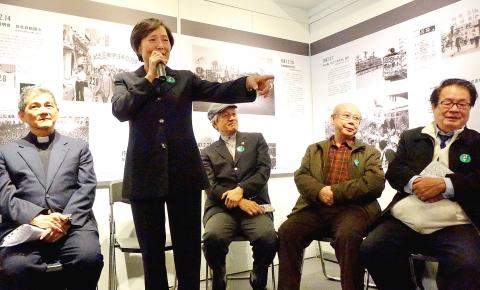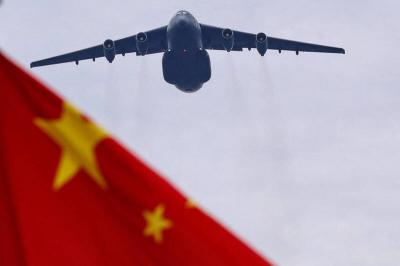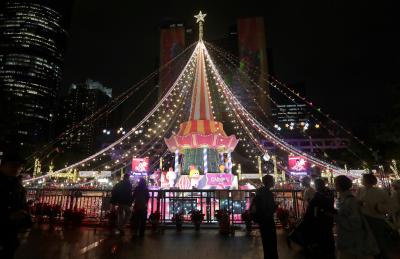An exhibition on the 228 Redress Movement that was led by late democracy pioneer Deng Nan-jung (鄭南榕) was launched in Taipei yesterday to commemorate the 70th anniversary of the 228 Incident and 30th anniversary of the movement’s inception.
The 228 Incident refers to an uprising in 1947 against the then-Chinese Nationalist Party (KMT) regime and the resulting brutal crackdown that left tens of thousands dead and led to nearly four decades of martial law.
Deng was imprisoned in 1986 without trial after then-Taipei city councilor Chang Te-ming (張德銘) accused him of swaying voters ahead of local elections by publishing articles in Deng’s Freedom Era Weekly magazine.

Photo: Chien Jung-fong, Taipei Times
Deng’s wife, former presidential office secretary-general Yeh Chu-lan (葉菊蘭), said at the exhibition’s opening ceremony yesterday that the first task Deng embarked on after his release from prison in 1987 was to seek repatriations for people who were killed in the massacre and oppressed during the White Terror era.
Shortly after his release from prison, Deng cofounded the 228 Peace Day Association and, during martial law, launched the first march advocating redress for those oppressed during the massacre, and for the government to designate Feb. 28 as a national holiday.
More marches followed, and as the following grew, Deng and other association members were frequently targeted by police officers, Yeh said.
“Thirty years later, everyone in the nation can speak freely about and research the 228 Massacre,” she said, calling the movement a “key” that unlocked the shackles placed on society during the White Terror era.
“Only when pain is remembered by the citizenry are history’s lessons learned. Only by learning the truth and understanding the past can Taiwan become a truly normalized and healthy nation,” she said.
“History should not be forgotten,” association cofounder Lee Sheng-hsiung (李勝雄) said.
Chiang Kai-shek (蔣介石) was the perpetrator of the 228 Massacre, Lee said, criticizing Chiang’s descendants, several of whom are politicians, for never apologizing for this atrocity.
Several people who were reported missing in the White Terror era are still unaccounted for, Lee said, urging surviving White Terror perpetrators and their descendants to come forward and explain what actually happened to those people and apologize so that they might be forgiven.
“The democracy people enjoy today is built on the tears, blood and sweat of democracy pioneers and countless broken families,” democracy movement pioneer Lin Tsung-cheng (林宗正) said.
This year’s 228 Incident commemorative events include a re-enactment of the 1987 Tainan march, which is being organized by National Cheng Kung University Student Union member Wu Hsin-ju (吳馨如).
To raise awareness of the 228 Incident, Wu has invited the public to participate in the march, which is to feature replicas of two banners and one sign used by Deng and association members.
The march is to take place on Feb. 28 at 2:28pm from Nanmen Florist Market in Tainan’s Nanmen Road and end at Tang Te-chang Memorial Park.

Beijing could eventually see a full amphibious invasion of Taiwan as the only "prudent" way to bring about unification, the US Department of Defense said in a newly released annual report to Congress. The Pentagon's "Annual Report to Congress: Military and Security Developments Involving the People's Republic of China 2025," was in many ways similar to last year’s report but reorganized the analysis of the options China has to take over Taiwan. Generally, according to the report, Chinese leaders view the People's Liberation Army's (PLA) capabilities for a Taiwan campaign as improving, but they remain uncertain about its readiness to successfully seize

Taiwan is getting a day off on Christmas for the first time in 25 years. The change comes after opposition parties passed a law earlier this year to add or restore five public holidays, including Constitution Day, which falls on today, Dec. 25. The day marks the 1947 adoption of the constitution of the Republic of China, as the government in Taipei is formally known. Back then the Chinese Nationalist Party (KMT) governed China from Nanjing. When the KMT, now an opposition party in Taiwan, passed the legislation on holidays, it said that they would help “commemorate the history of national development.” That

Taiwan has overtaken South Korea this year in per capita income for the first time in 23 years, IMF data showed. Per capita income is a nation’s GDP divided by the total population, used to compare average wealth levels across countries. Taiwan also beat Japan this year on per capita income, after surpassing it for the first time last year, US magazine Newsweek reported yesterday. Across Asia, Taiwan ranked fourth for per capita income at US$37,827 this year due to sustained economic growth, the report said. In the top three spots were Singapore, Macau and Hong Kong, it said. South

Snow fell on Yushan (Jade Mountain, 玉山) yesterday morning as a continental cold air mass sent temperatures below freezing on Taiwan’s tallest peak, the Central Weather Administration (CWA) said. Snowflakes were seen on Yushan’s north peak from 6:28am to 6:38am, but they did not fully cover the ground and no accumulation was recorded, the CWA said. As of 7:42am, the lowest temperature recorded across Taiwan was minus-5.5°C at Yushan’s Fengkou observatory and minus-4.7°C at the Yushan observatory, CWA data showed. On Hehuanshan (合歡山) in Nantou County, a low of 1.3°C was recorded at 6:39pm, when ice pellets fell at Songsyue Lodge (松雪樓), a